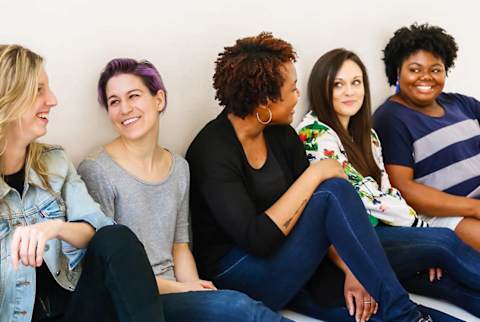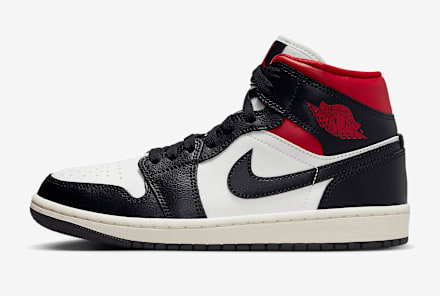Advertisement

As a society, it feels like we're the loneliest we've ever been. That’s not much of an exaggeration, by the way: One recent study found that nearly half of all Americans sometimes or always feel alone, and one in four rarely or never feel like there's anyone around them who really understands them. To make matters even sadder, these feelings of alienation were higher among millennials and Gen Z, meaning younger generations are growing up feeling even more isolated than those before them.
In this loneliness epidemic, it’s more vital than ever that we make a conscious effort to be building communities of people around us who can keep us afloat through our lowest of lows. One of the most effective ways I’ve done this is by creating my very own empowering support group.
In 2017, I was a lonely microinfluencer on social media who, despite the thousands of followers, comments, and messages, still suffered from diagnosed major depression. I craved connection outside of the squares of Instagram and inside of the activities of real life. I knew there were people on the other side of my screen who resonated with the things I was posting and writing about online, and many of these women were exercise professionals, wellness enthusiasts, and passion-seekers like myself who connected with my journey toward mental health, self-love, and fitness. They commented on my photos and messaged me words of encouragement, but I never met them in real life.
One day it finally hit me: What if I brought all these people together into one room and saw what happened?
So after a little bit of planning, about 20 women met together on a Sunday morning with yogurt parfaits, teas, and seats assembled in a circle in an athletic store in the middle of Manhattan. All I had were three simple questions I'd scribbled into a notebook: How do you love yourself? How do you nurture your soul? What sports make you feel the most alive?
What happened during the next two hours was magic. We ate, drank, cried, laughed, and connected all over our commonalities of building a passion-filled, healthy lifestyle in the concrete jungle of New York City. We left encouraged, inspired, and wanting more.
Today the same women, as well as new members, meet every month to get real with each other about everything from regret to guilt to money. We call our group Self Soul Sport, which reflects our dedication to a lifestyle of loving self, nurturing soul, and living sport. (We’ve even expanded to a podcast and a book club!)
Support groups can come in many different forms: They can be real-life meetings between friends and acquaintances, or they can be digital spaces where professionals in the same industry can gather to connect over their shared creative, emotional, and spiritual needs. Whatever shape it takes, a truly empowering support group leaves you feeling heard. After each interaction, you leave feeling inspired and ready to conquer what’s next in your journey.

Reaching out and getting started can feel like a huge leap—but it doesn’t have to be overly complicated. Here’s precise steps for how to start building your tribe:
1. Have a clear purpose for the group.
Why are you creating this group? It may be because you’re looking for a community yourself, or it may be because you have a loved one who will benefit from it. Get real honest during this process of figuring out your way. Your purpose will be the impetus to continue to plan the gritty details.
2. Figure out what kind of people you want to surround yourself with.
Who exactly do you want to connect with, and what are you all seeking? A support group is made up of people with similar intentions, problems, fears, triumphs, and outlooks. The best support group is one that unites people on all of these fronts.
3. Keep in mind the logistics.
There are people who love weekend get-togethers and those who greatly prefer after-work events because they travel on weekends. Even the location of your meetups can make or break turnout. Poll your ideal attendees to get the details just right; they’ll appreciate that you asked, and they’ll be much more likely to come through knowing the plans were made with them especially in mind.
4. Get creative with reaching out.
You’ll need to figure out a way to communicate with people somehow. Instagram and Facebook are both great places to start talking about it. If you’re not into social media, simply gather email addresses of people you think would love the idea and send out the information that way. It can be as easy as getting everyone on the same group text.
5. Set some guidelines to creating safe, vulnerable, and inclusive conversations.
Know that this space isn't only for you, and your opinions and experiences aren’t the only ones that matter. As the leader of the group, you have a responsibility to your members to help them feel open to speak. There are many ways to facilitate this kind of atmosphere. Before every meeting, I share a set of ground rules emphasizing that everyone has a voice, and I try to obligate everyone to talk. During discussion, if it looks like someone wants to say something but isn’t, invite them to speak their mind.
6. Build your group with your heart and no ulterior motives.
The reason why I’ve continued with mine over a year is not for profit, not for adoration, not for ego, but for love. I love gathering women together. All the details will fall into place eventually, but it's your dedication to your purpose that will ultimately drive the group to success.
Creating your own support group can pave the way for forming new friendships, for finding more hope and less fear, and for developing into better versions of ourselves. Most importantly, sharing your life with like-minded people will make you feel like you have a real community behind you, rooting for you, and encouraging your every step.
Now here's a few creative ideas for what to do with your new tribe.
Watch Next
Enjoy some of our favorite clips from classes
Enjoy some of our favorite clips from classes
What Is Meditation?
Mindfulness/Spirituality | Light Watkins
Box Breathing
Mindfulness/Spirituality | Gwen Dittmar
What Breathwork Can Address
Mindfulness/Spirituality | Gwen Dittmar
The 8 Limbs of Yoga - What is Asana?
Yoga | Caley Alyssa
Two Standing Postures to Open Up Tight Hips
Yoga | Caley Alyssa
How Plants Can Optimize Athletic Performance
Nutrition | Rich Roll
What to Eat Before a Workout
Nutrition | Rich Roll
How Ayurveda Helps Us Navigate Modern Life
Nutrition | Sahara Rose
Messages About Love & Relationships
Love & Relationships | Esther Perel
Love Languages
Love & Relationships | Esther Perel












